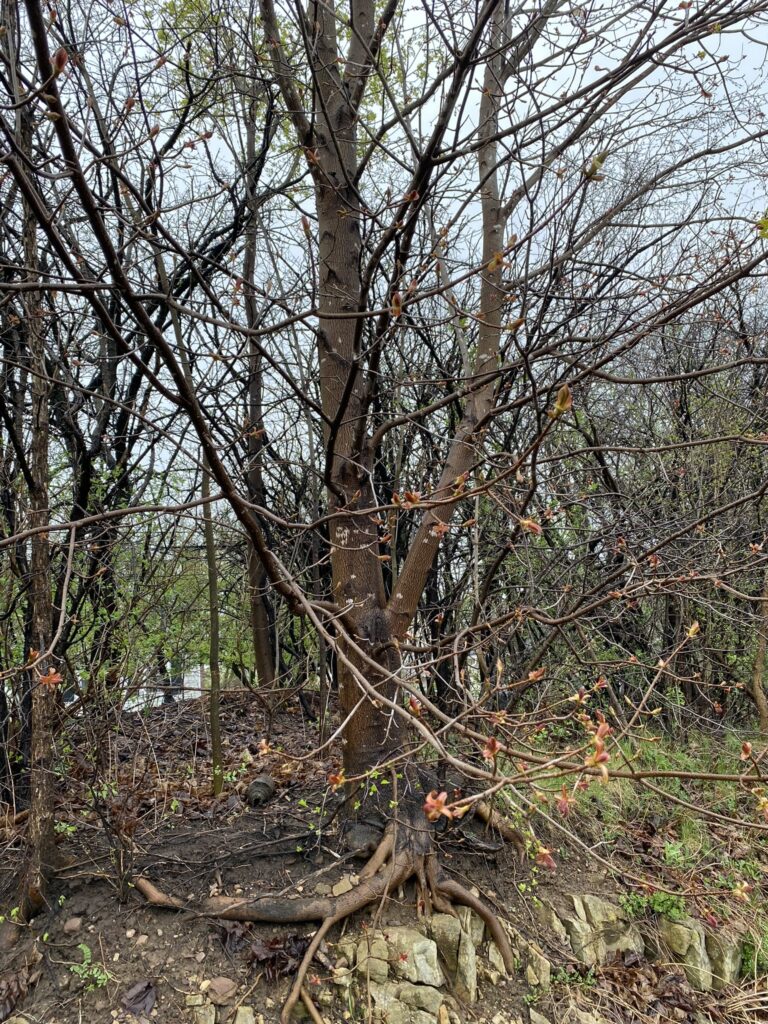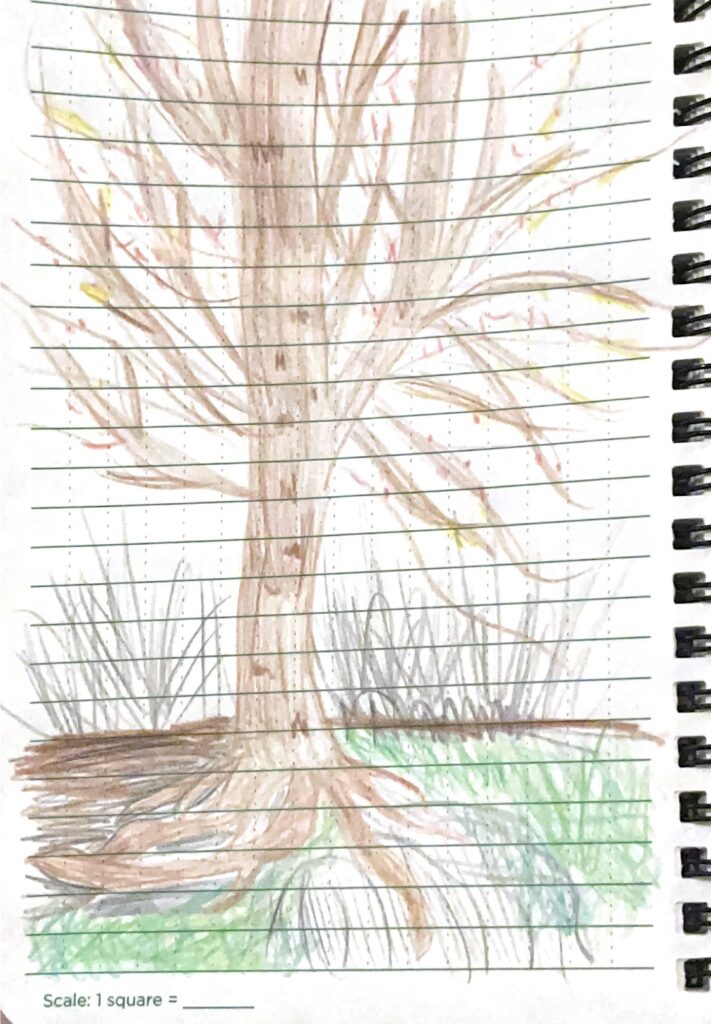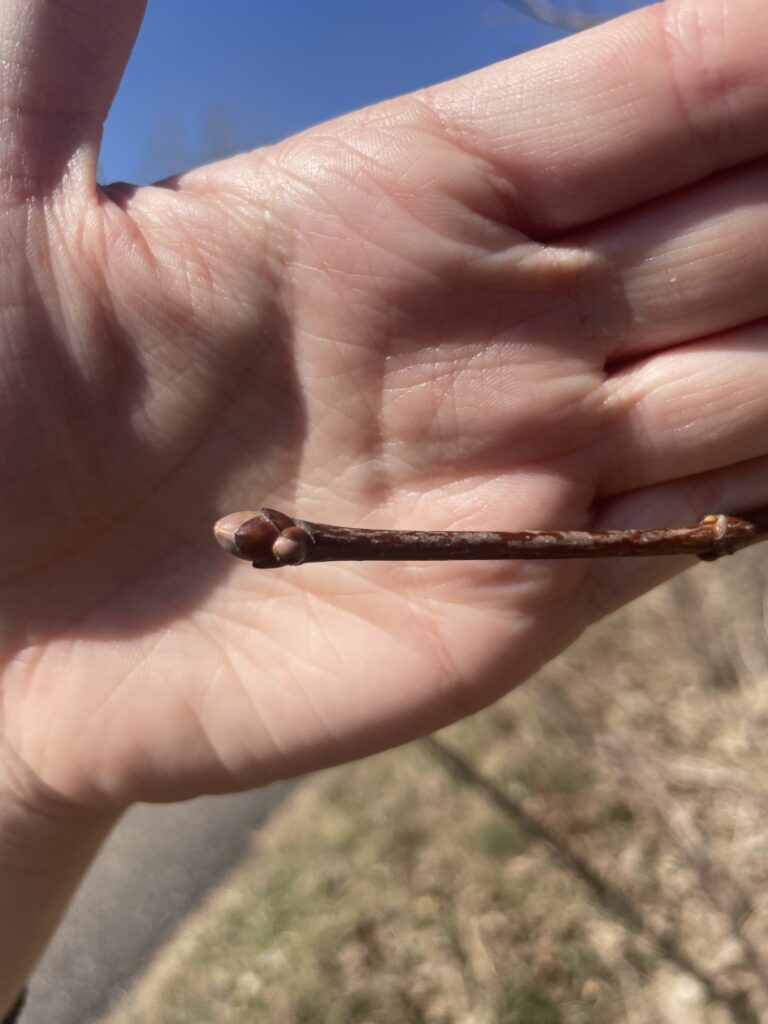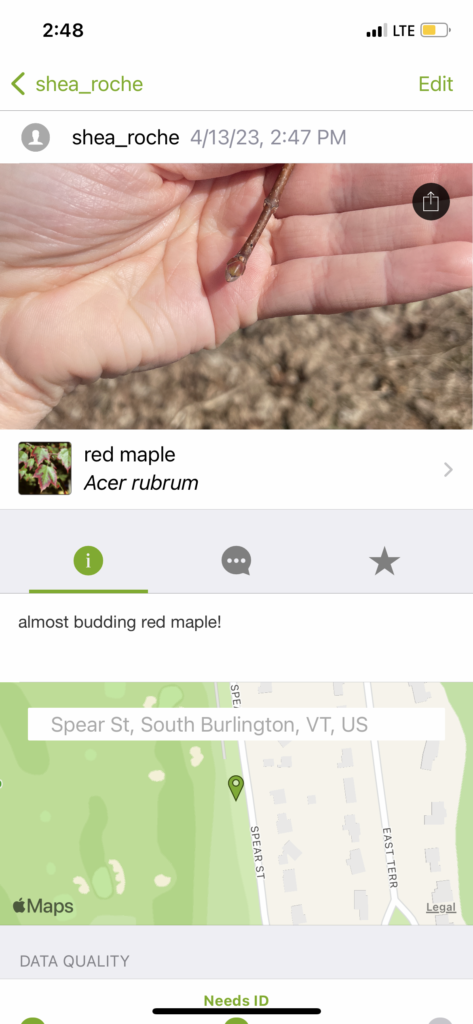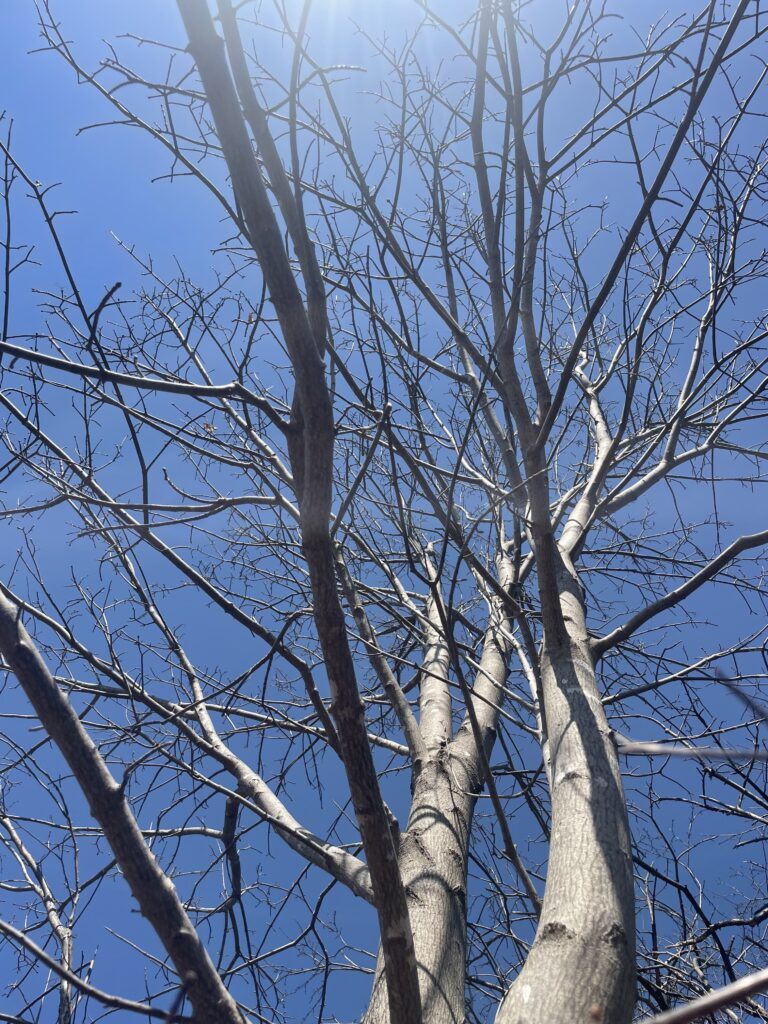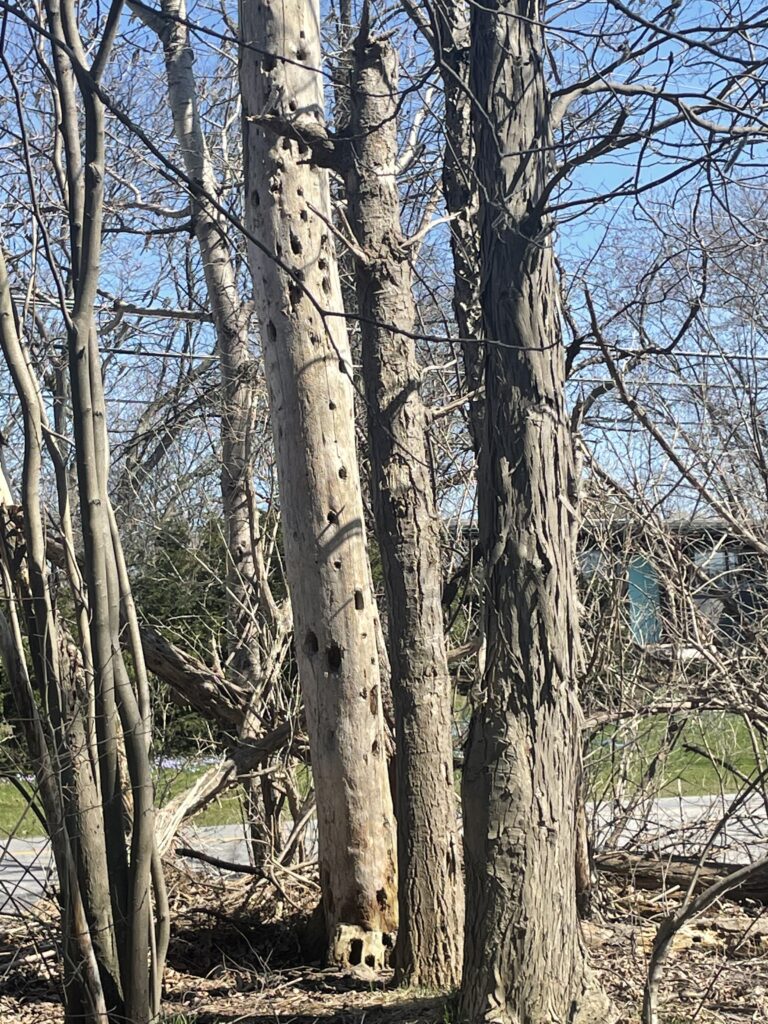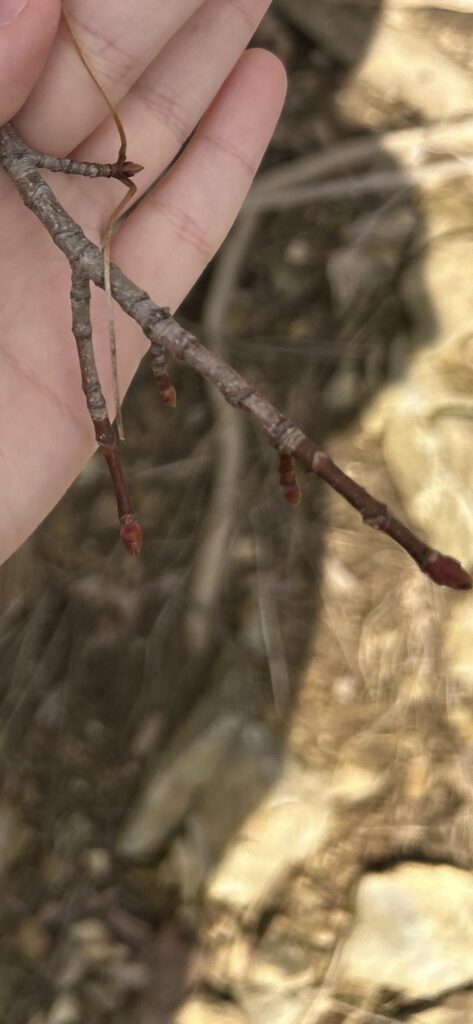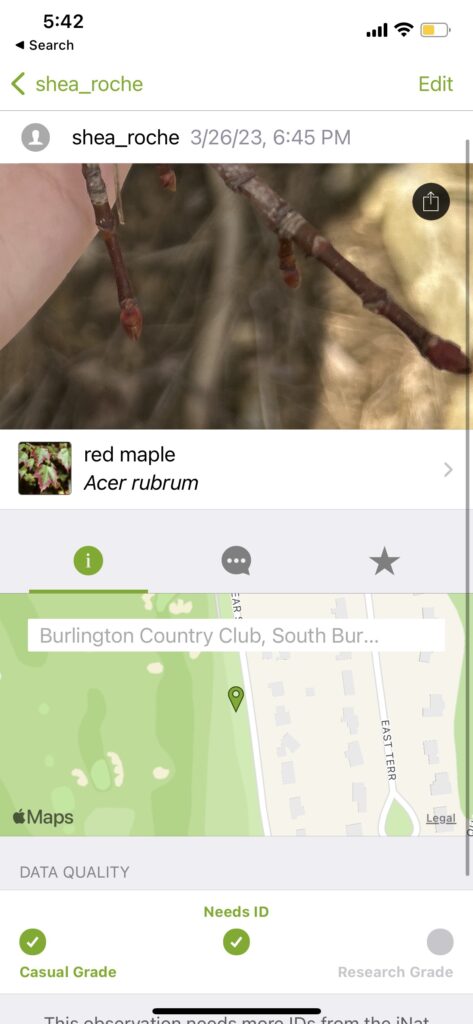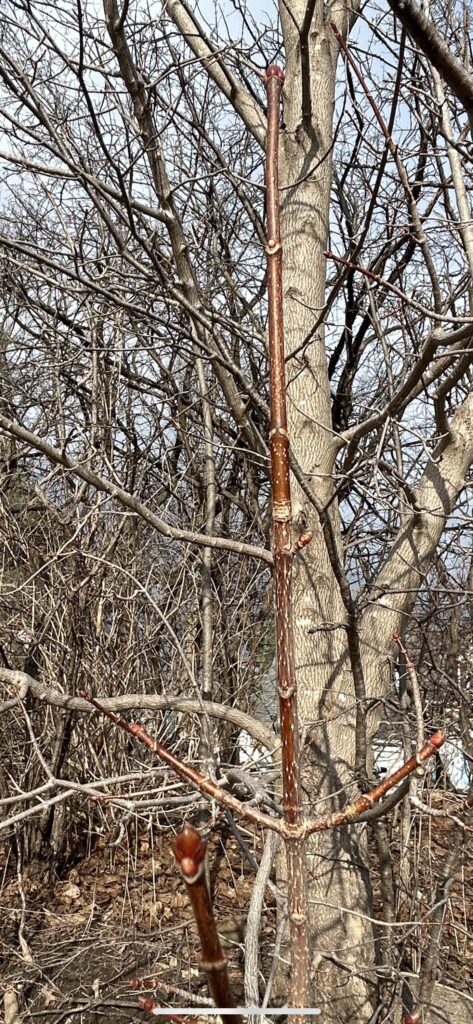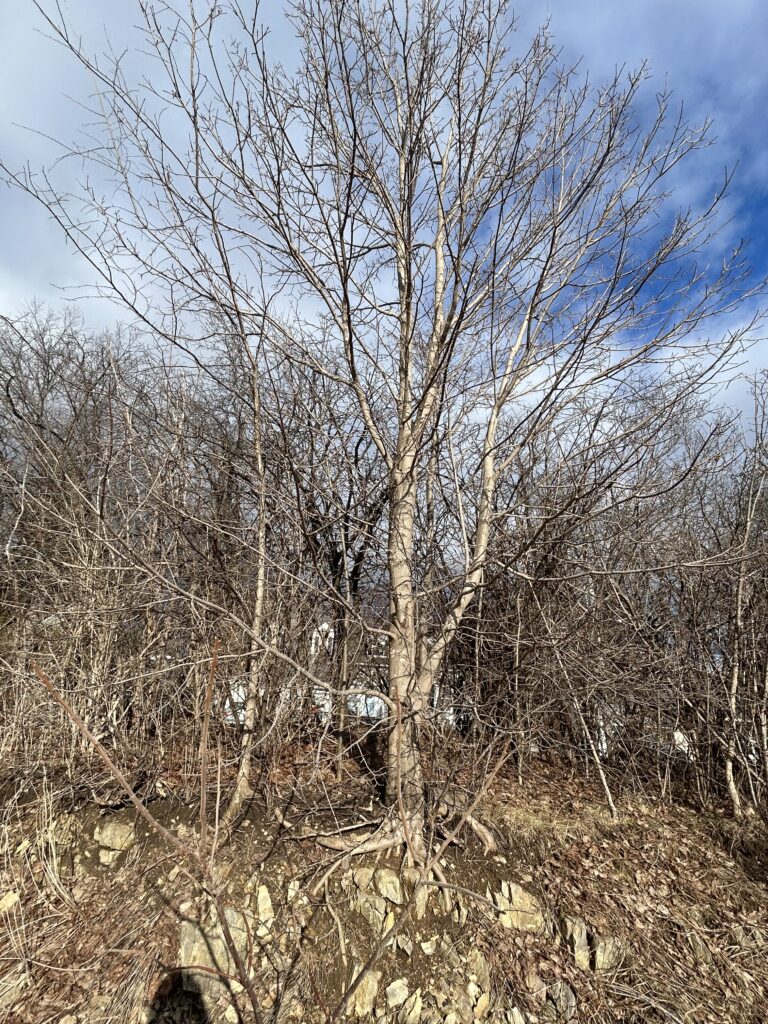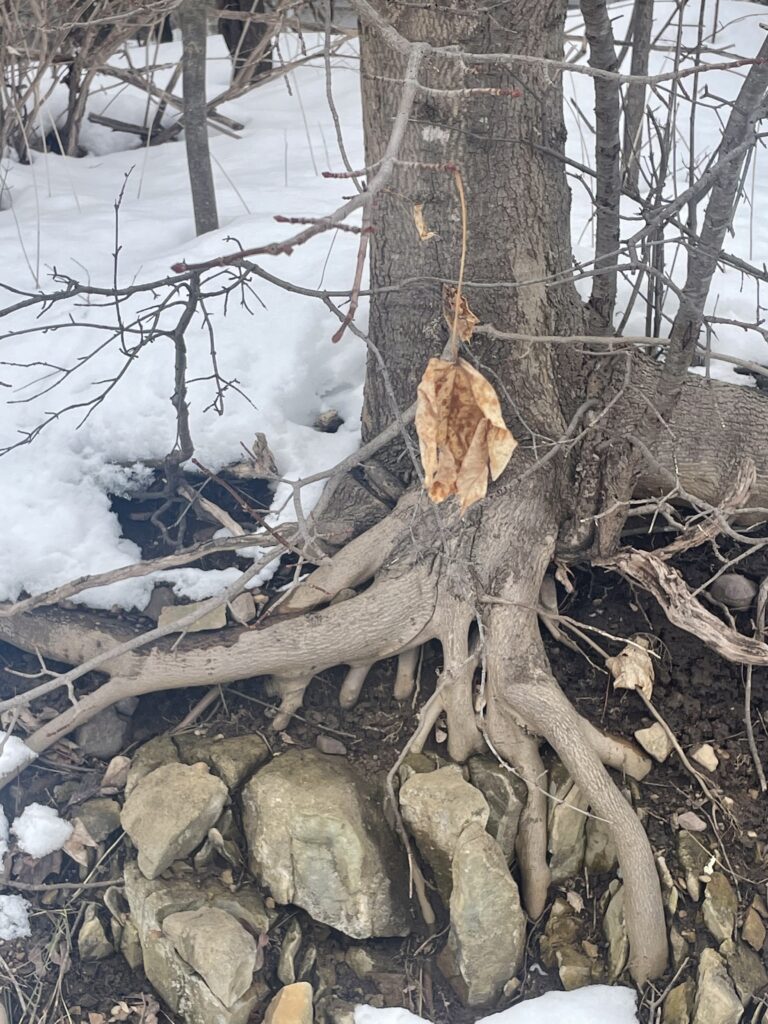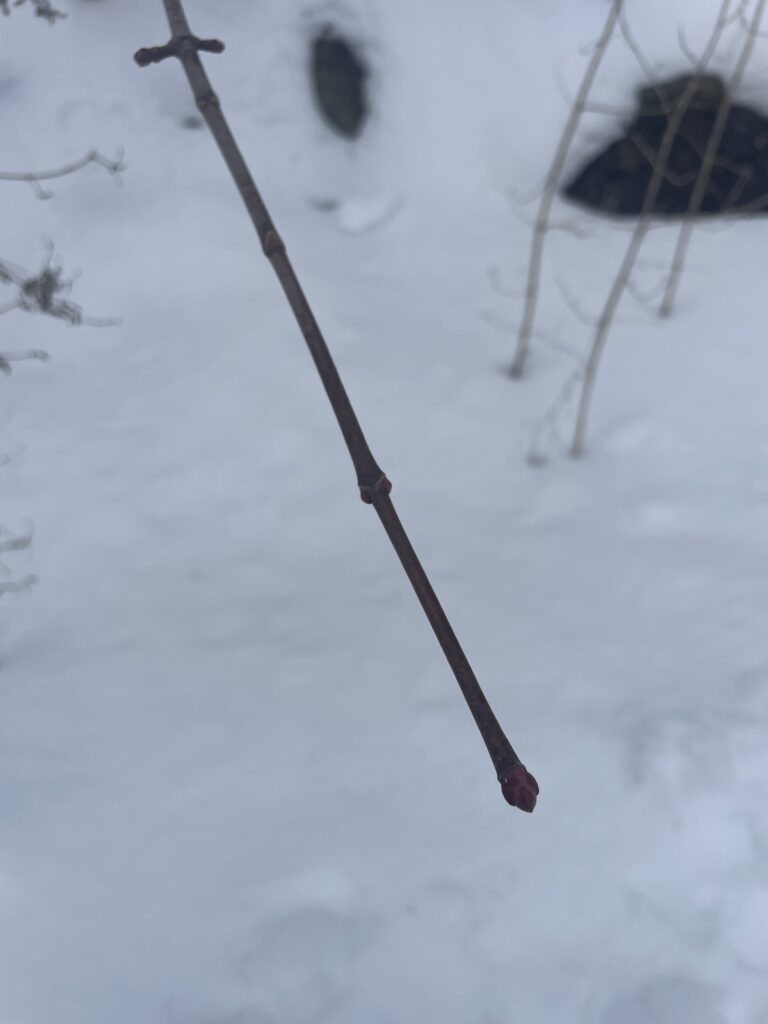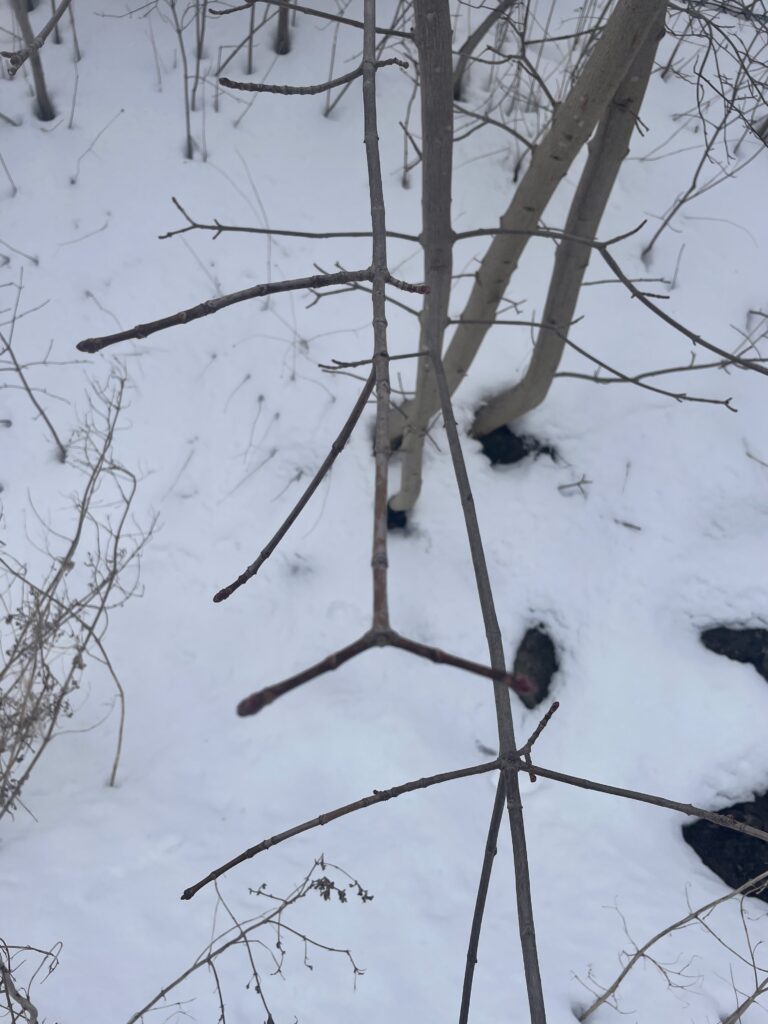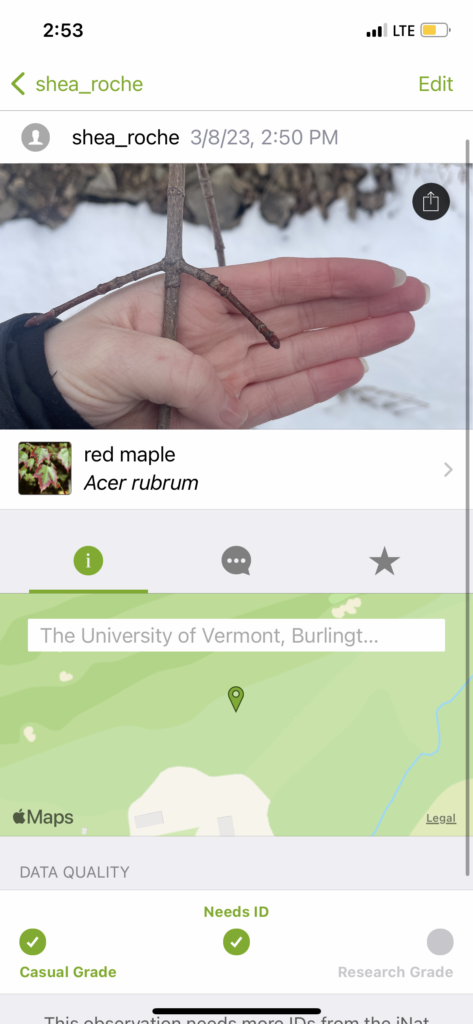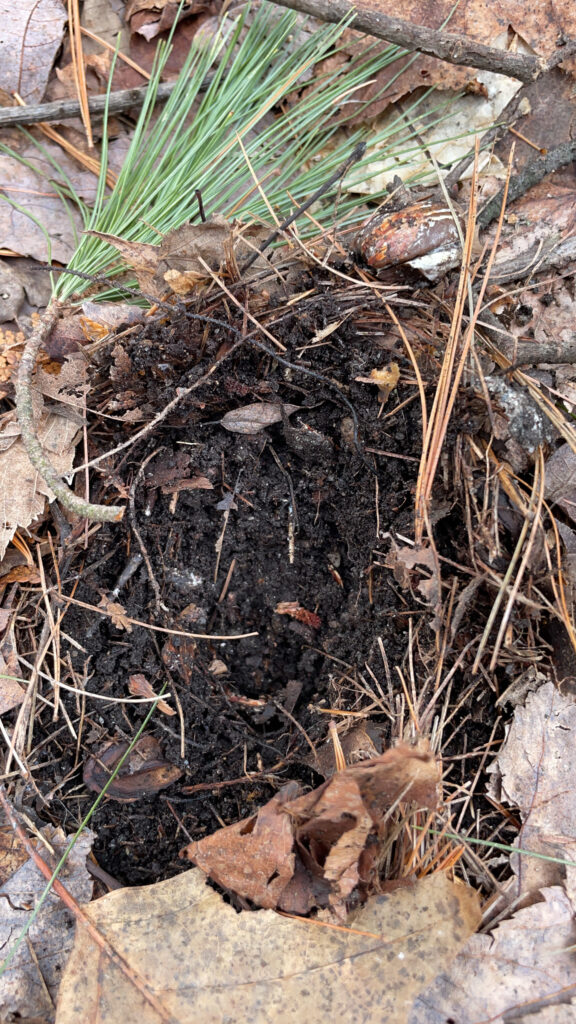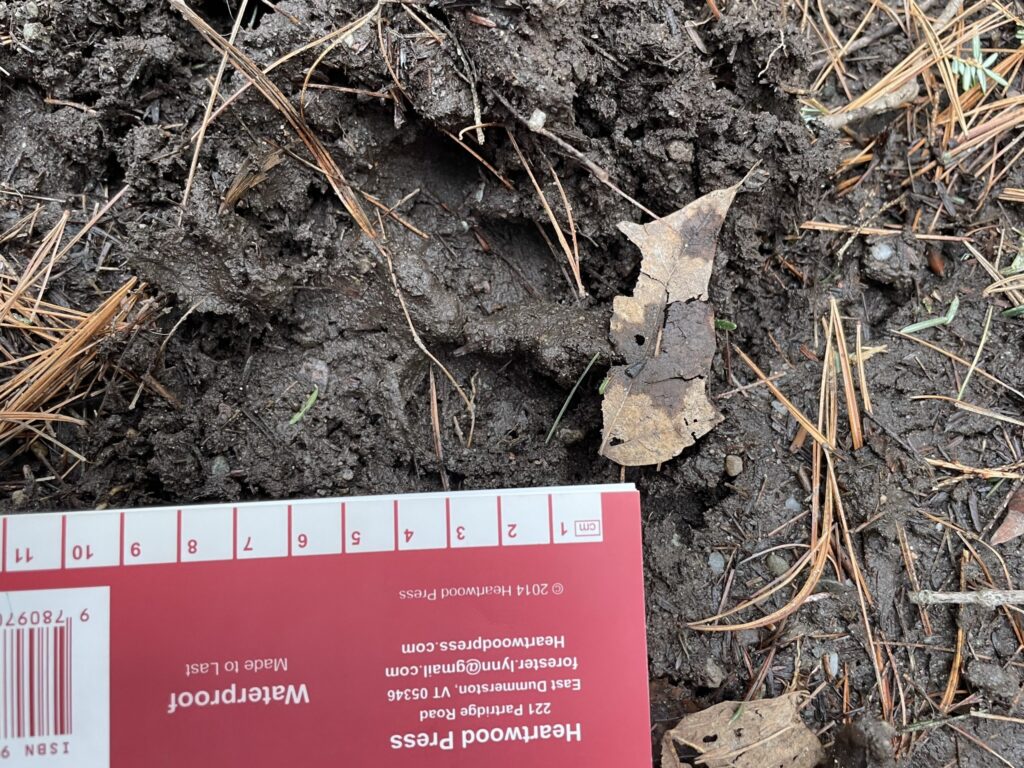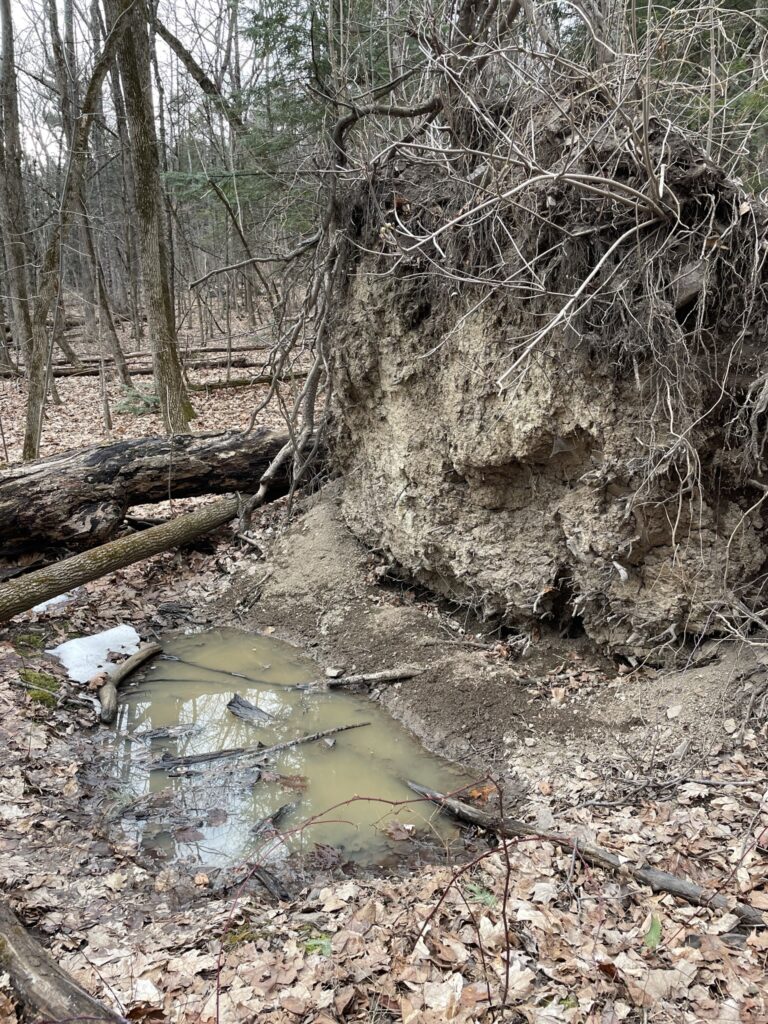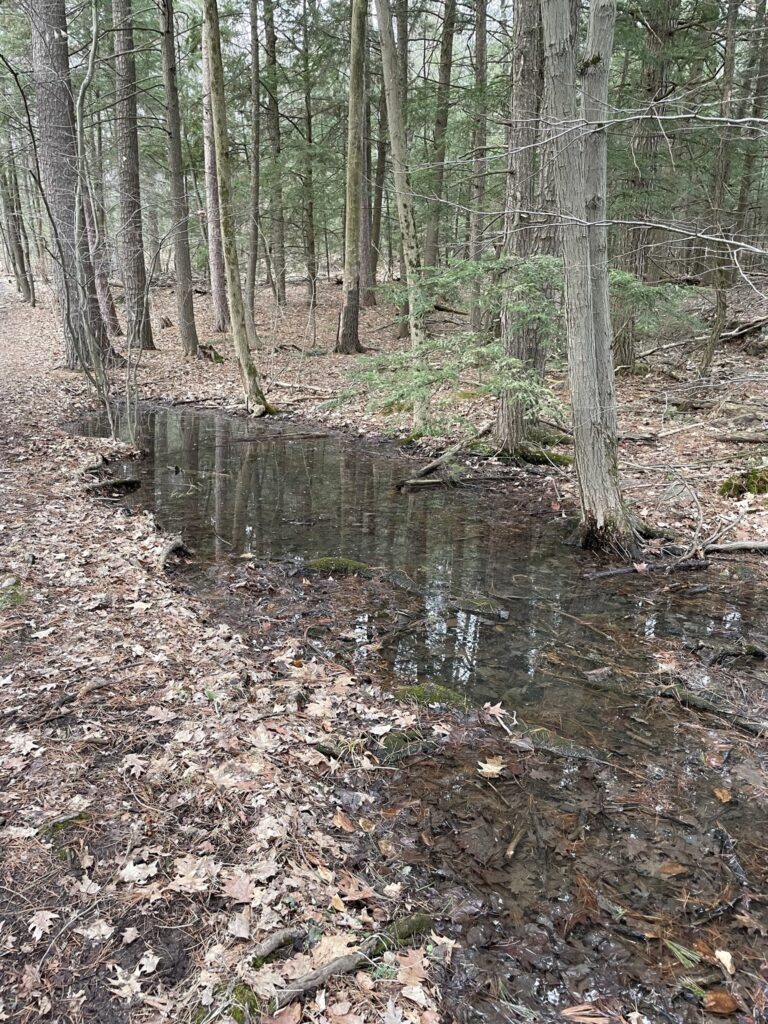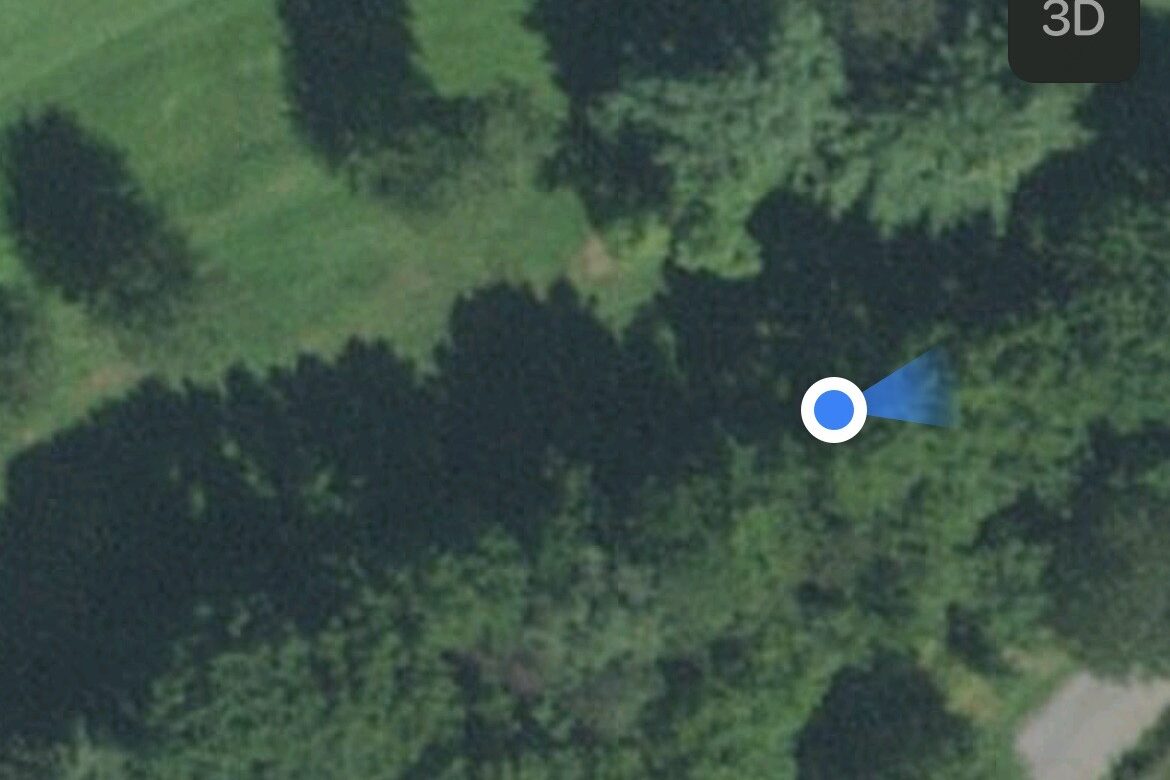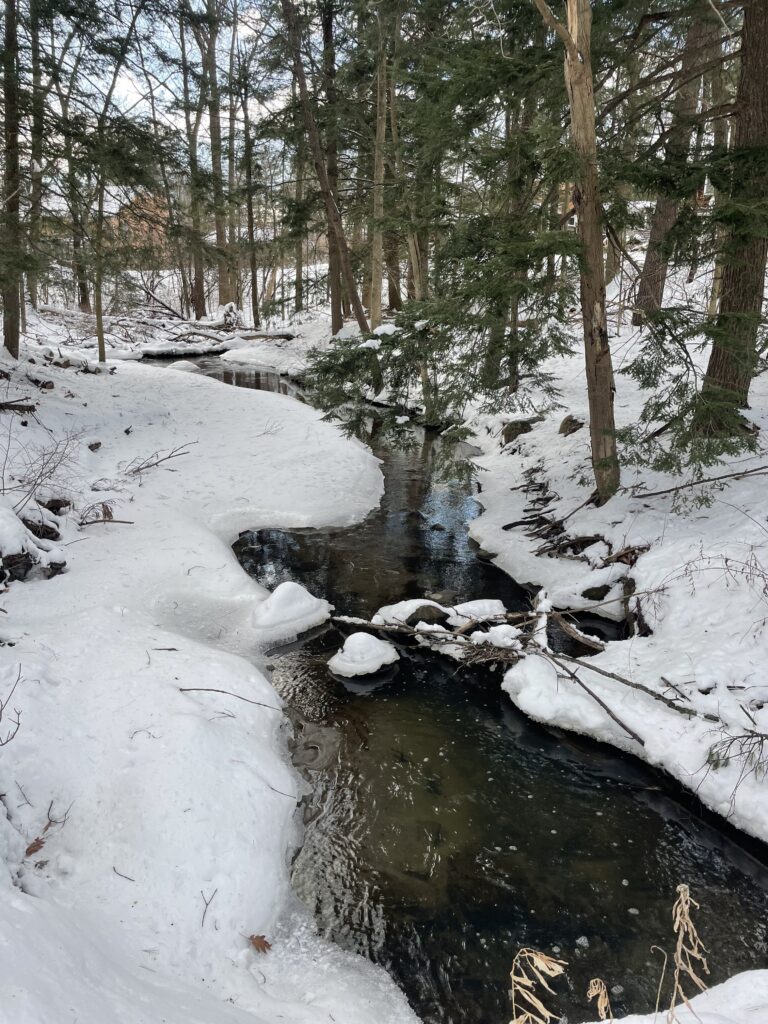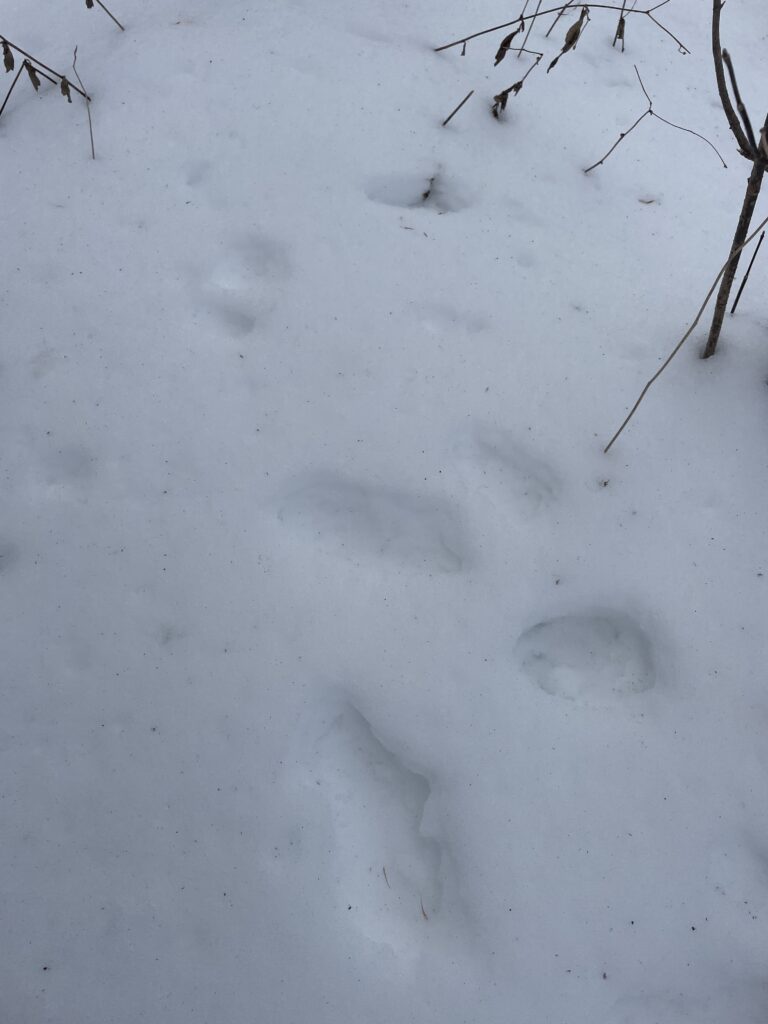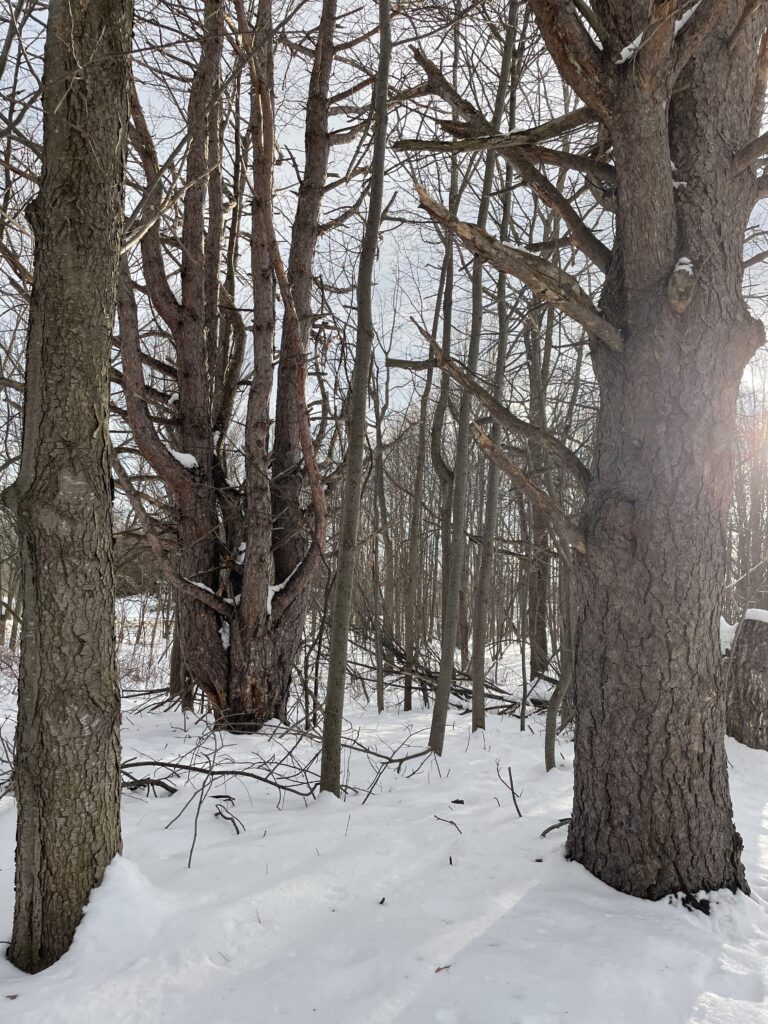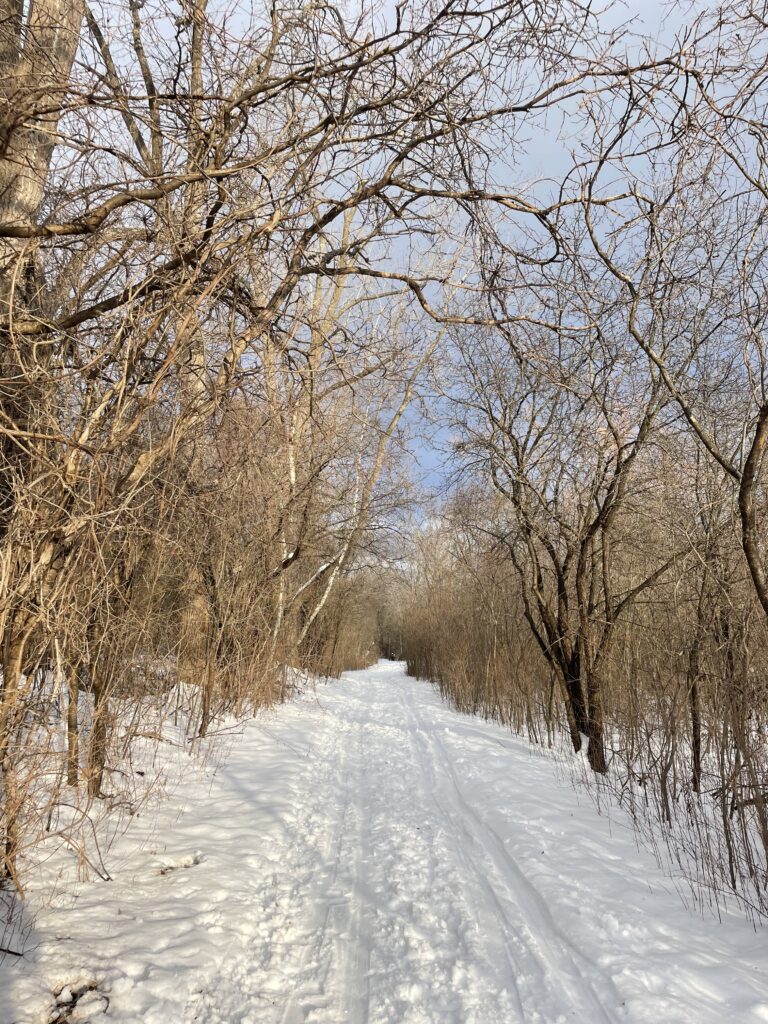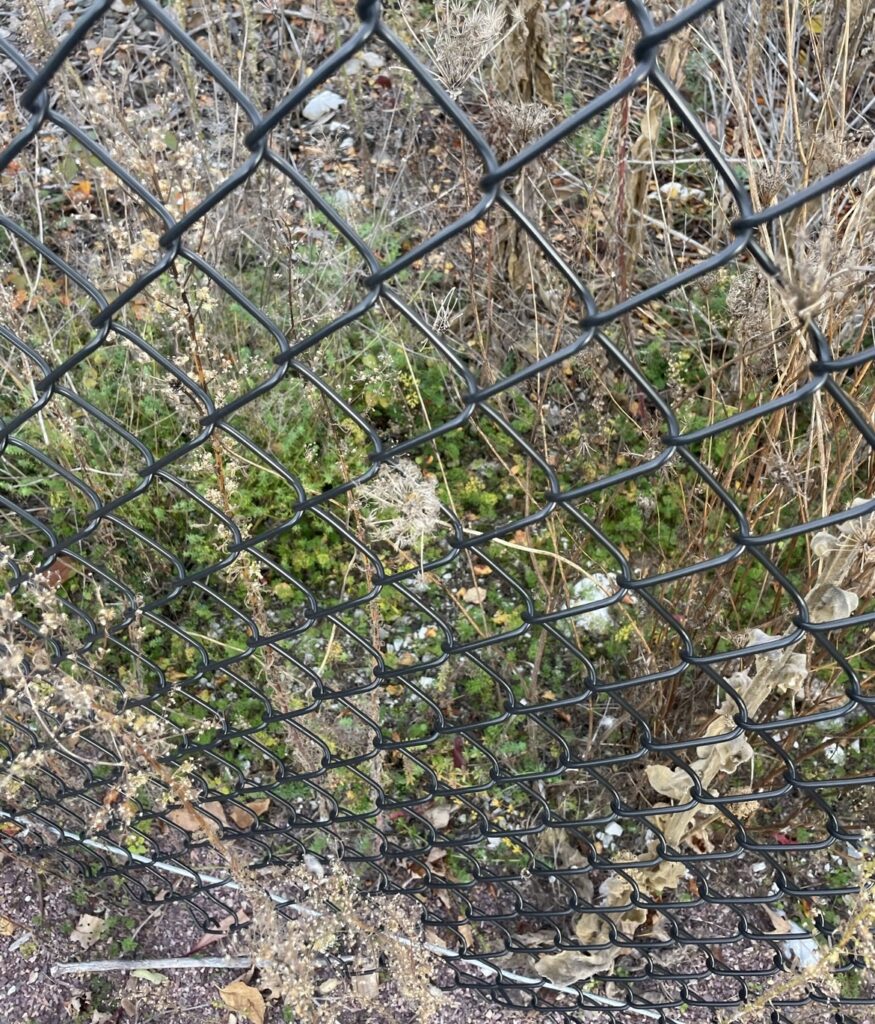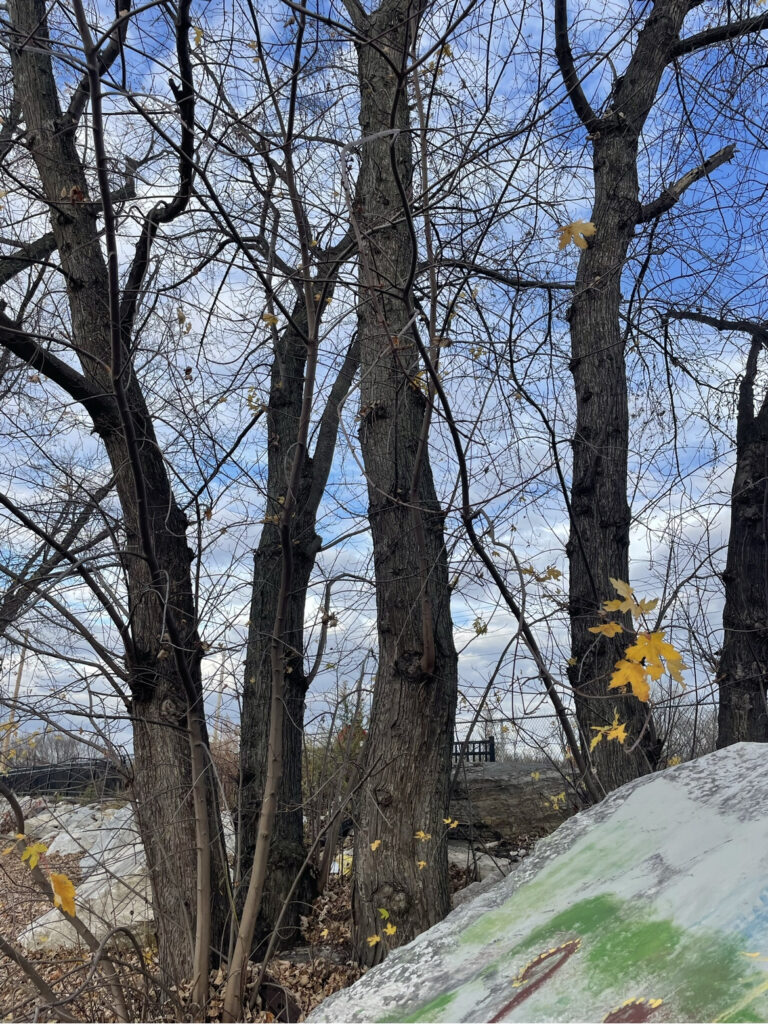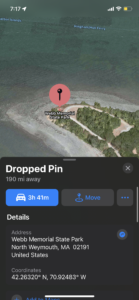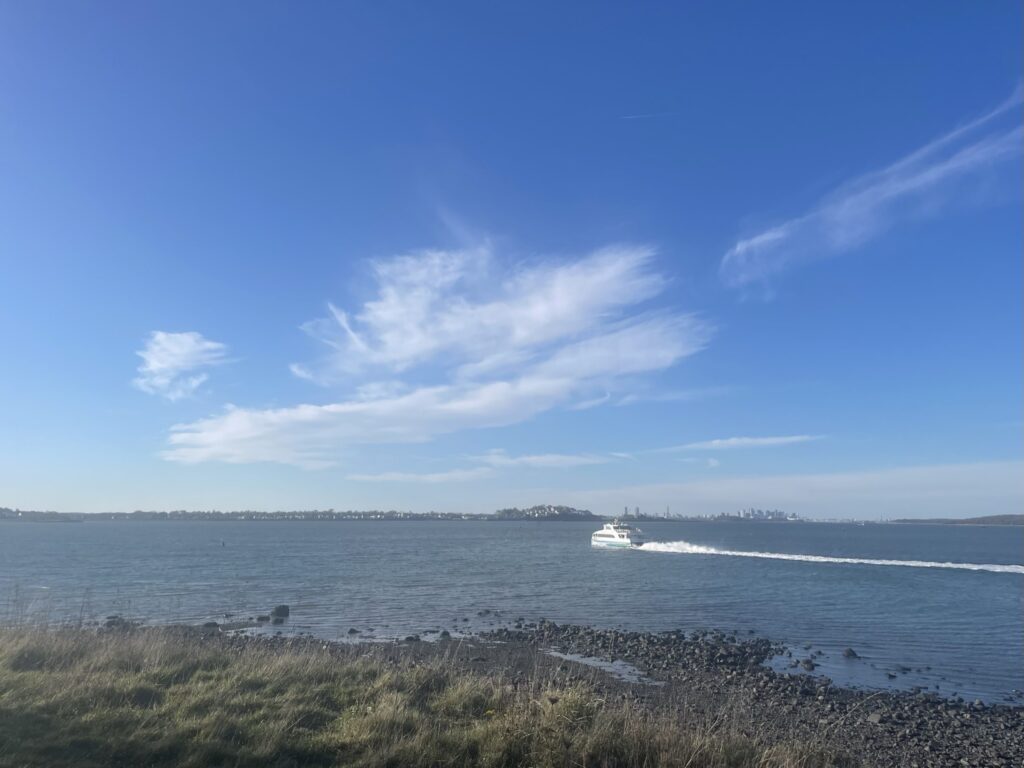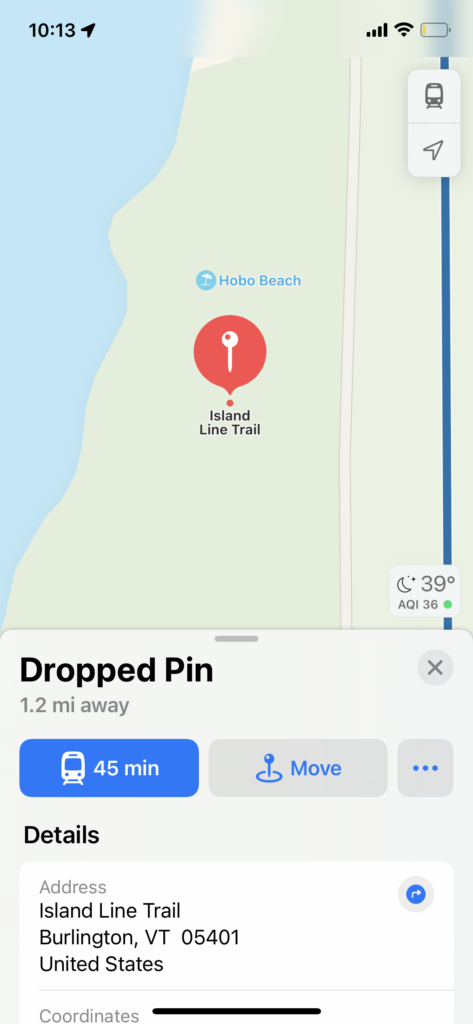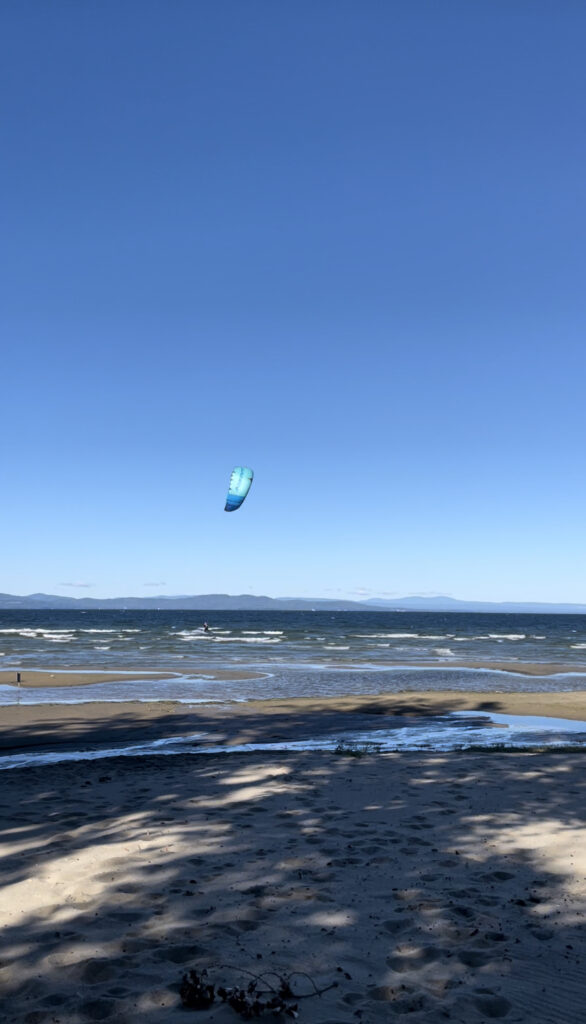The phenology of my site has changed dramatically since the first time I have visited but only really in the past week has the site changed in appearance in a long time! This week my Red Maple Tree started to flower!! It was so exciting it was almost like I proud mom moment. Every week I kept saying that the next week it would definitely flower but it was a bud for longer than I expected!
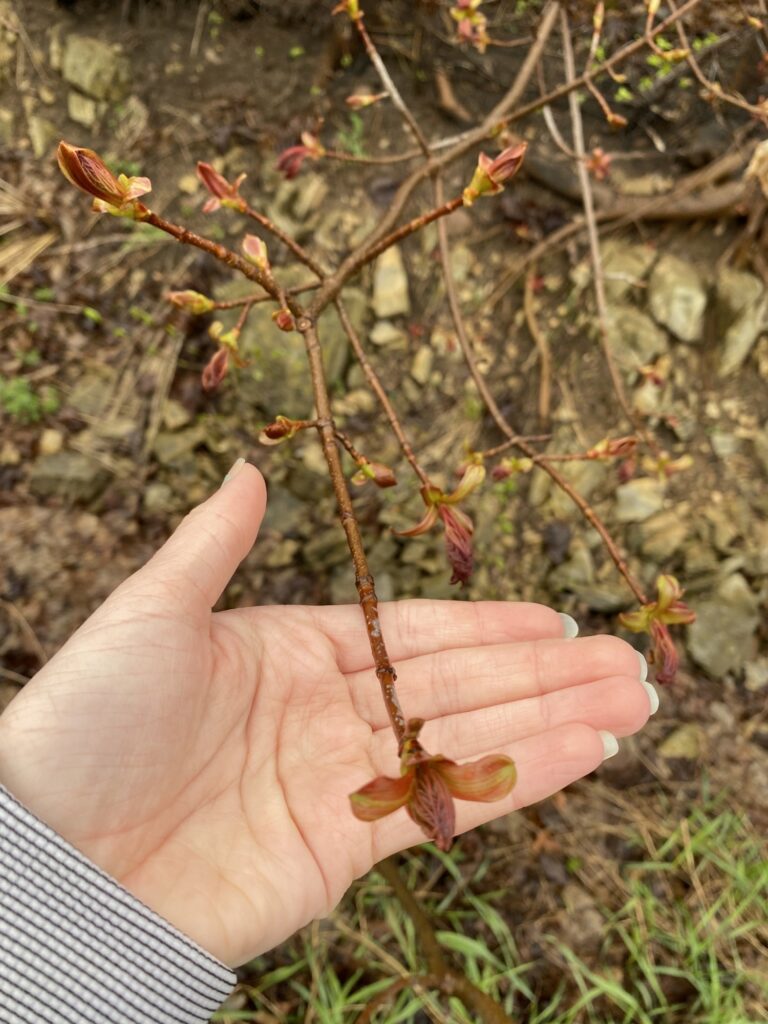
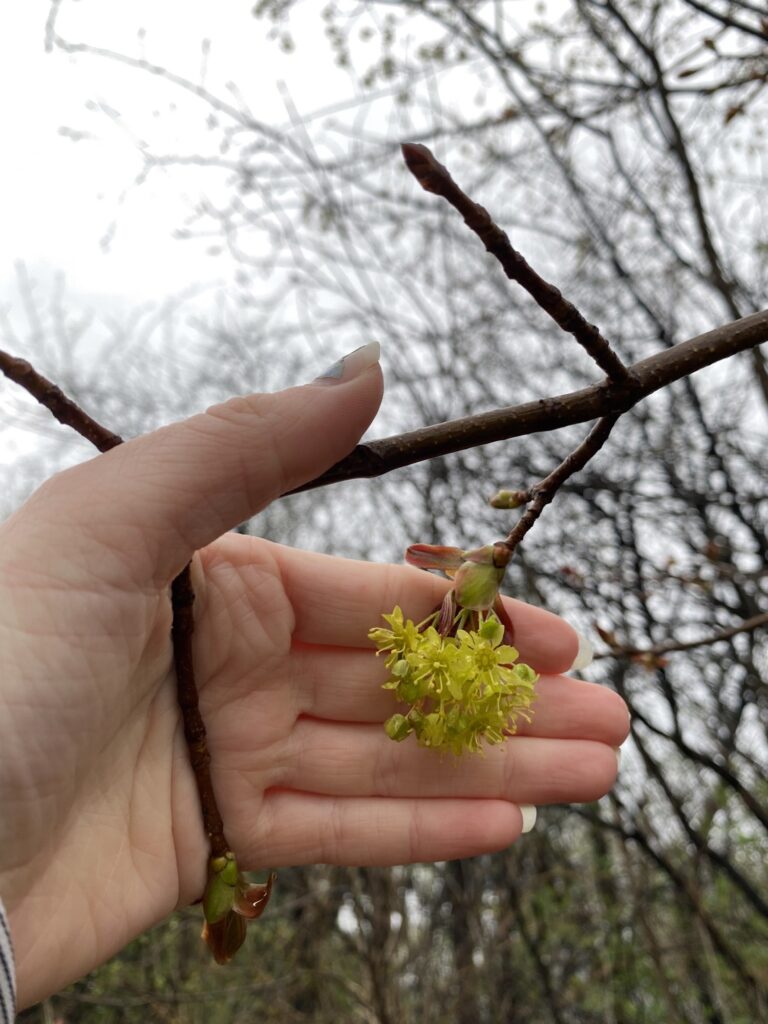
I’ve become very familiar with the small wooded area near the gold course. I have been running through it since the beginning of the school year but when I first tried to reach this spot walking I got so lost that I was just wandering around the gold course because things looked different when there is a foot of snow on the ground. Now I am more familiar with the little walking loop that will take you to my spot and I can find my spot by looking for the older trees off of the younger path!
Nature and culture intertwine very frequently in my phenology spot and in my spot near my phenology tree! My phenology spot borders the golf course where in the winter it was very quiet and filled with more wildlife species. In the spring and summer though, the Burlington Golf Course starts to fill up with more people, creating a larger human disturbance near the wooded trails. More people also start to walk on these paths and on the Bike Path including including my team that starts running on them as well. Humans are definitely have a large presence at both of my spots!
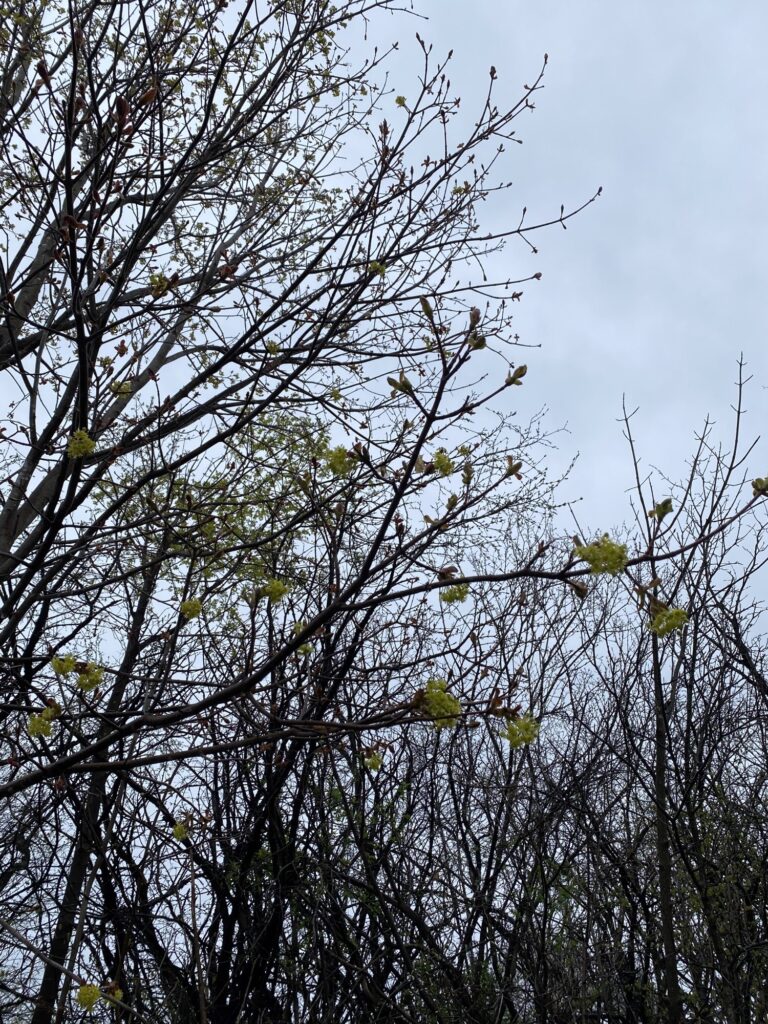
I would say I do feel part of my place. I feel most connected with my tree more than my actual phenology spot just because I visited my tree more. But I still feel like I am always on the Bike Path and on the trails running so I still felt close to my original phenology spot as well! I will definitely continue to check on my Red Maple tree every spring to see when it flowers and when I come back every fall semester to see when it will lose it’s leaves! This tree will always have a special place in my heart!
